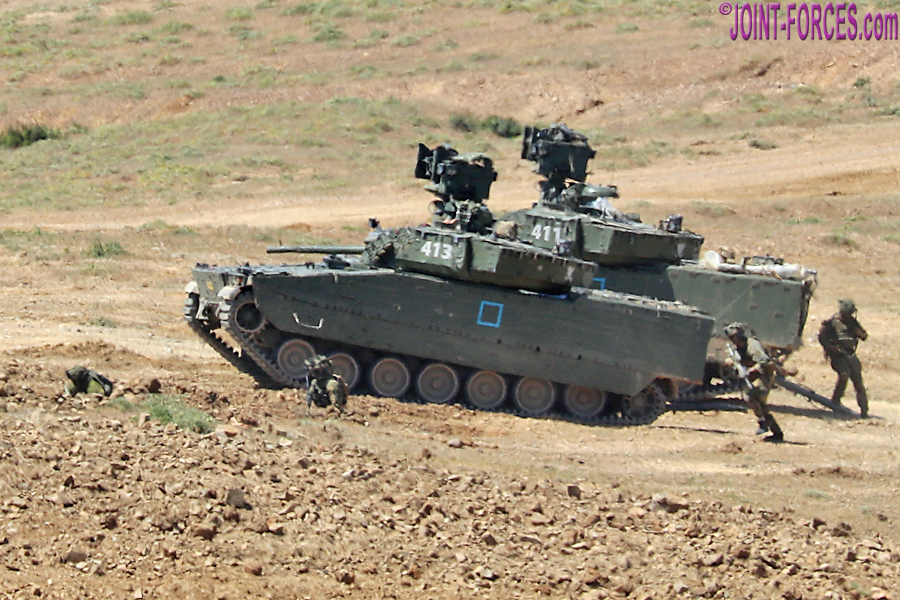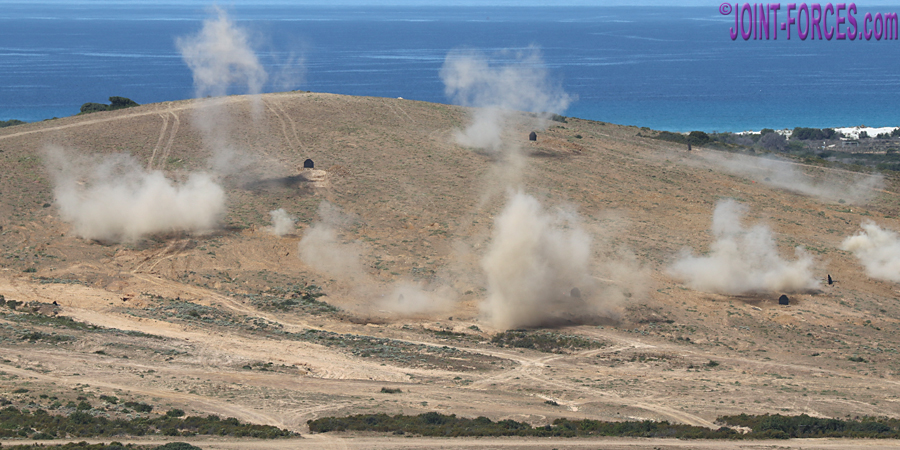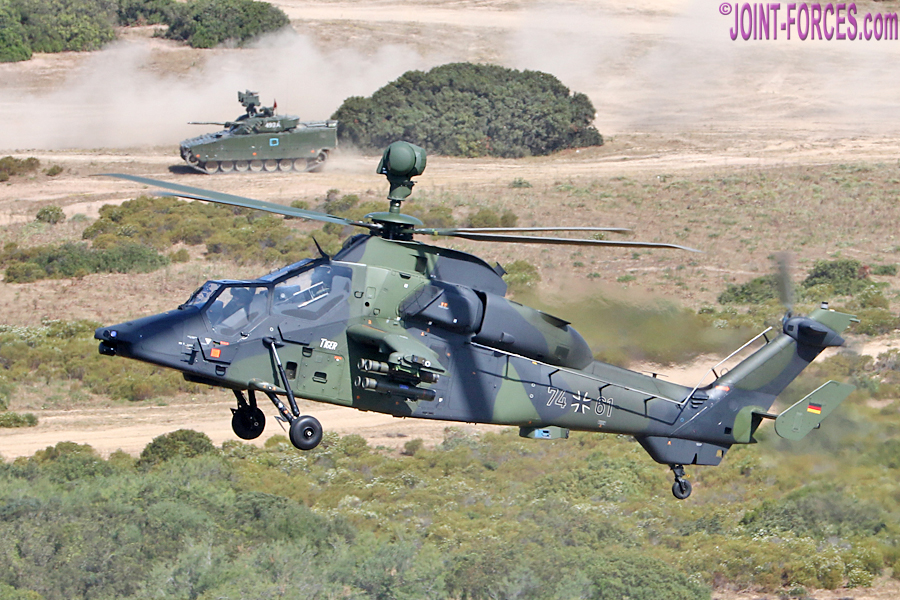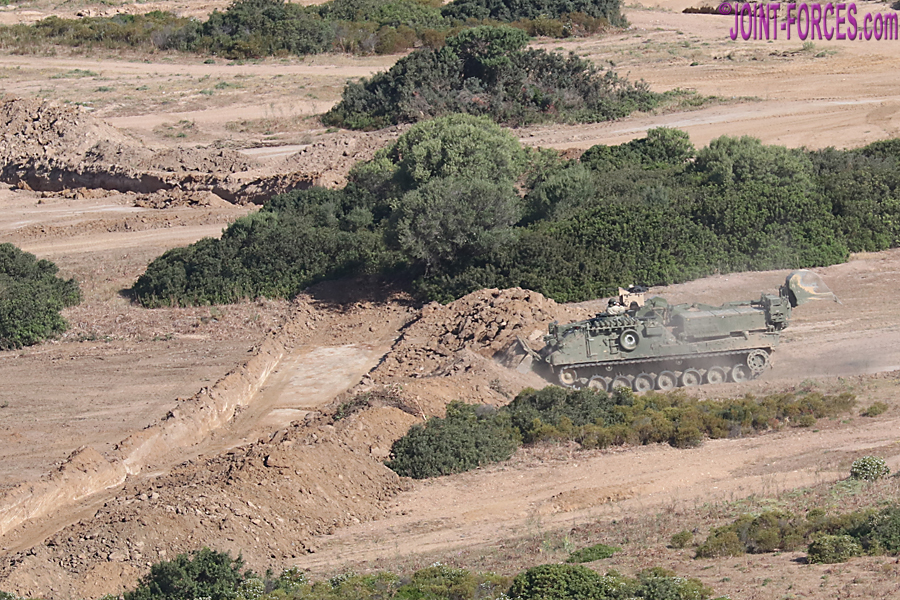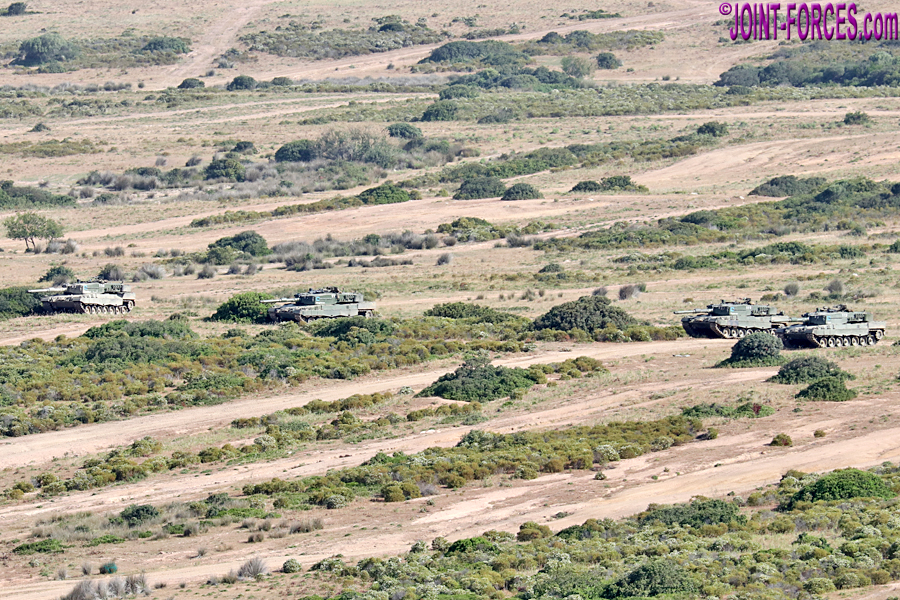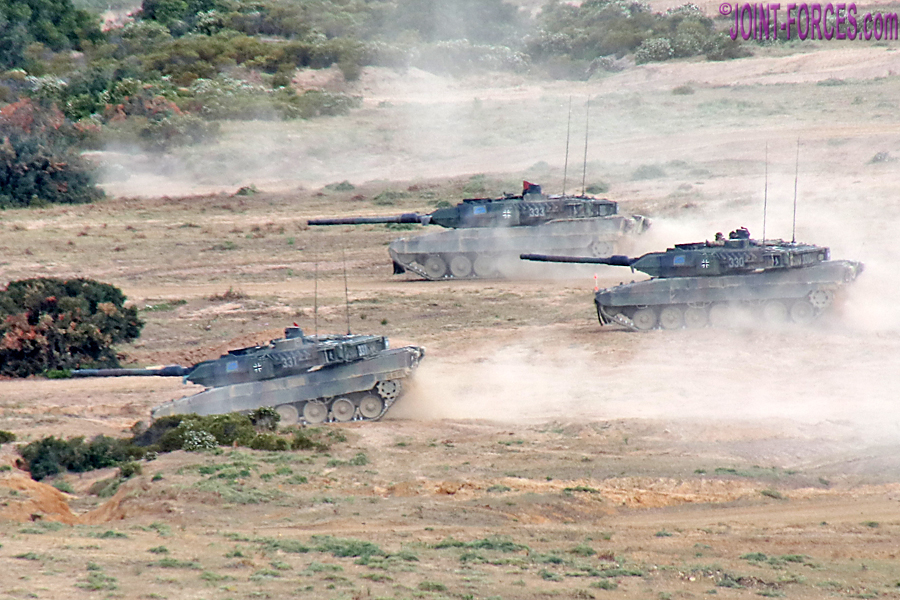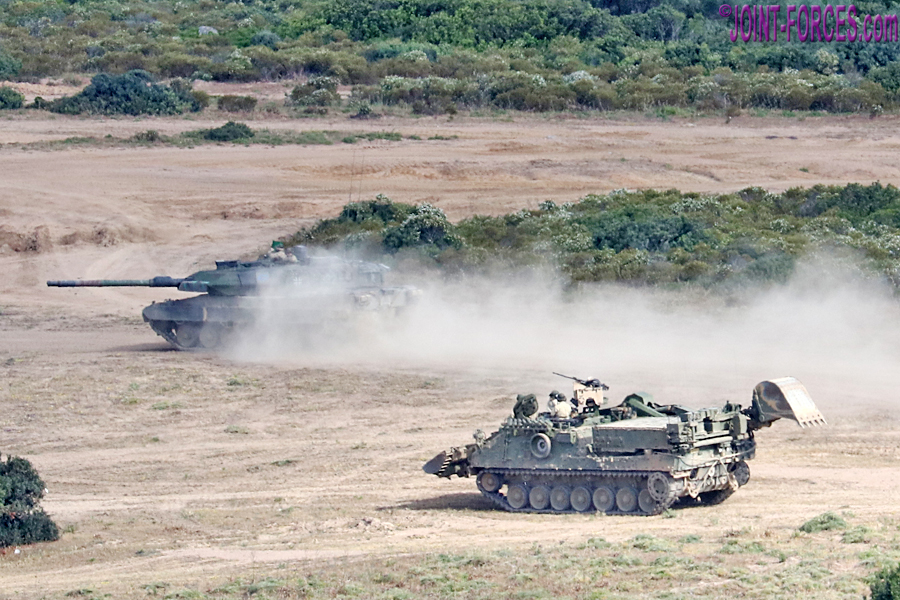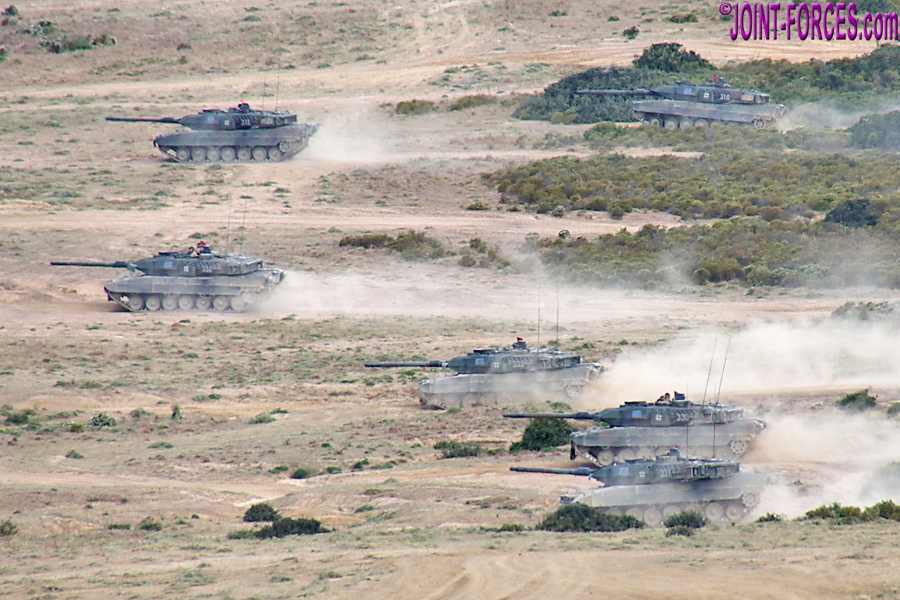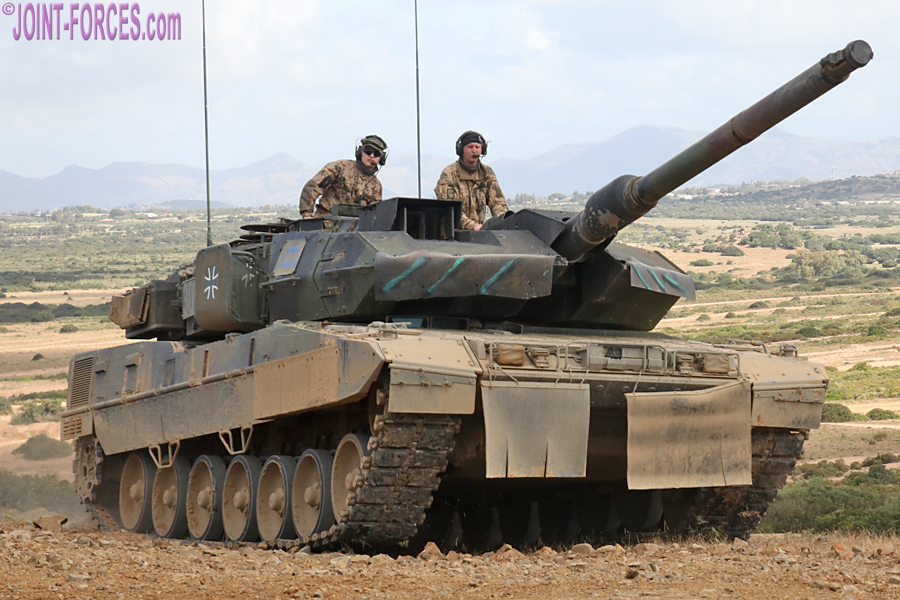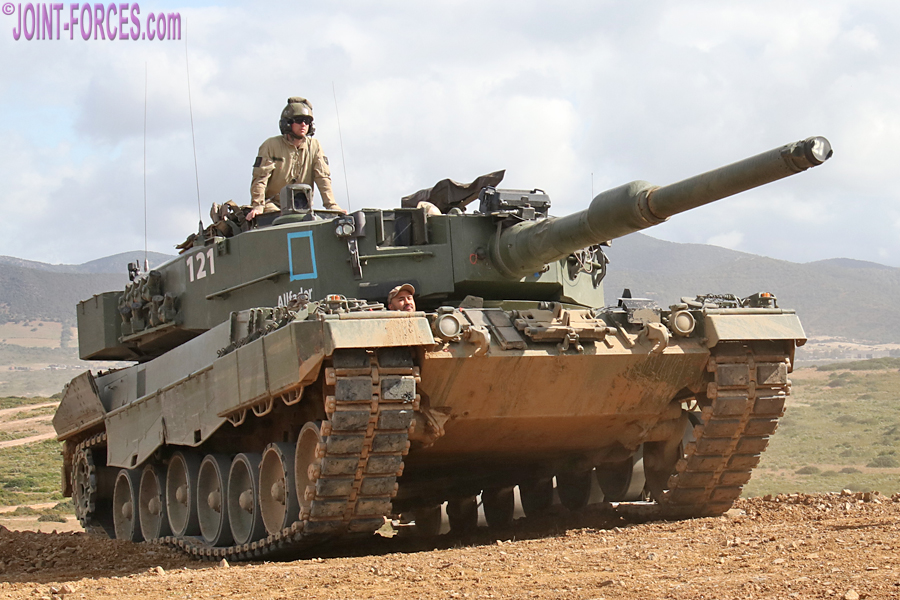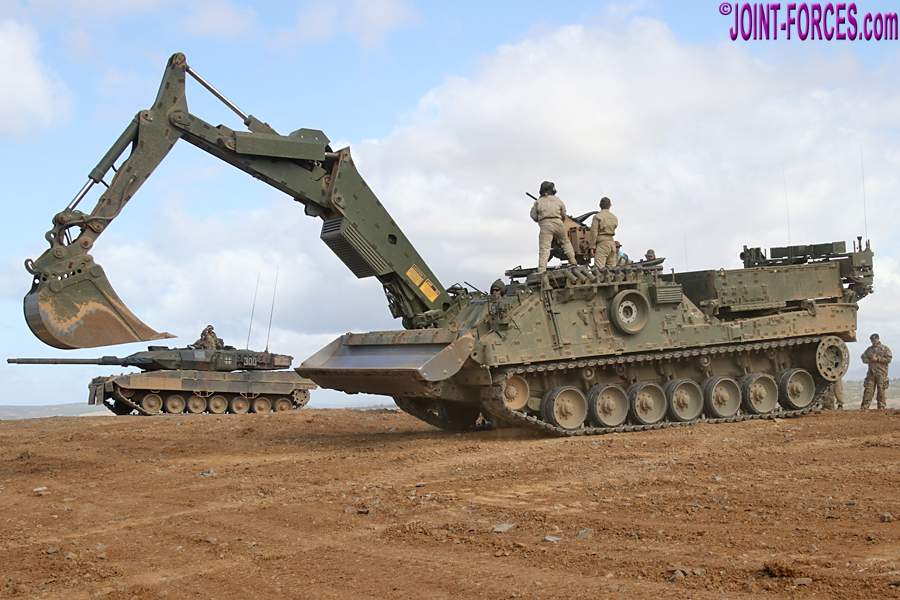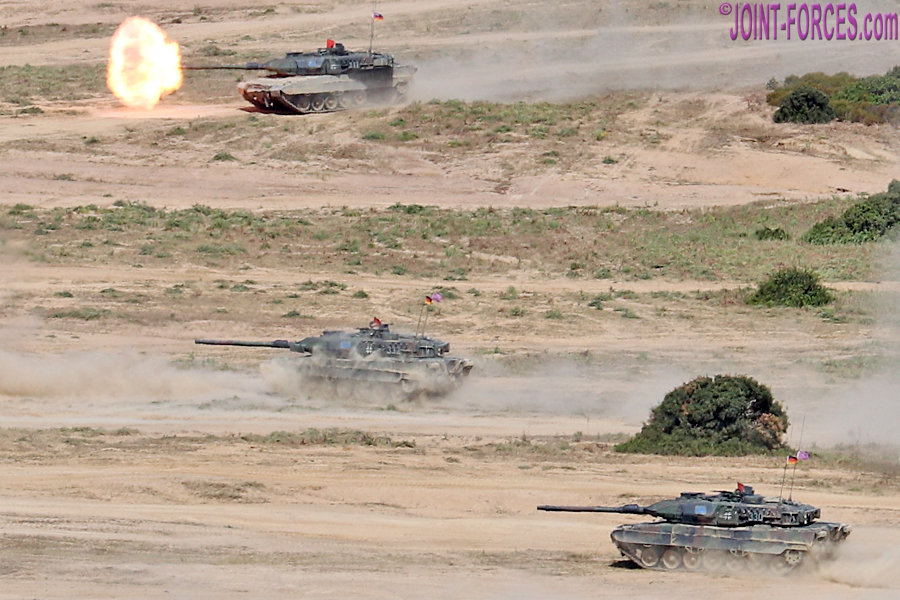
In mid-May NATO exercise NOBLE JUMP 2023 (NOJU23) reached its pivotal point on Sardinia with a Joint Allied Powers Demonstration Day (JAPDD), reports Bob Morrison.
~
When we left Part One of the NOBLE JUMP 2023 (NOJU23) JAPDD on Teulada Training Area in south-west Sardinia, the Allied blocking force of rapid response mechanised infantry in Dutch Boxers, which had been taking enemy artillery fire as enemy troops advanced on their forward positions, was about to undertake a tactical withdrawal using the terrain to mask their movement from view.
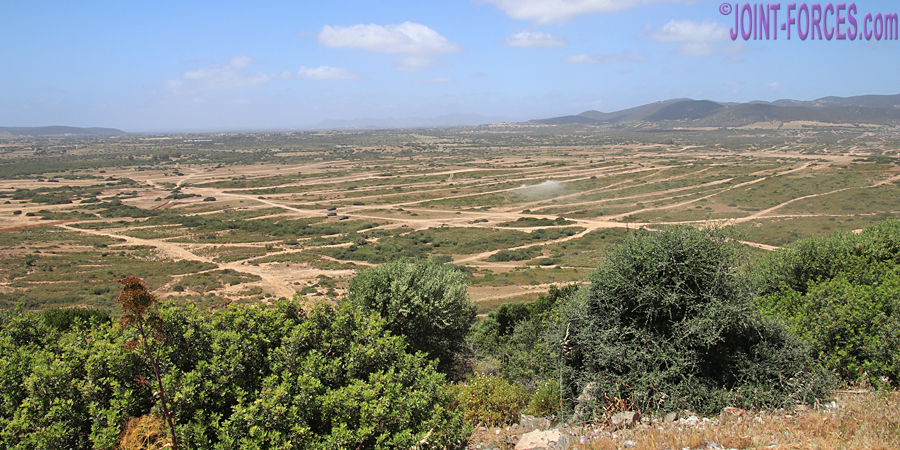
Teulada Training Area, next to the garrison base of the Fusiliers / Sharpshooters of the 3° Reggimento Bersaglieri, is ideal for live-fire exercises by mechanised or armoured infantry, supported by main battle tanks and artillery, as it occupies an undulating plain with high ground on one side, salt marshes on the other and the open sea in front behind high dunes. Running roughly NNE to SSW, with a slight southerly change of direction where the previously parallel firing lanes narrow, the range allows for battle runs well in excess of 5,000 metres for at least a battalion-sized combined arms battlegroup. Occupying most of a 12 by 10 kilometre peninsula, surrounded by water on three sides and well clear of all civilian airports, activities on the training area can also be supported by fixed wing and rotary aviation assets plus there is a 300-metre long runway with hangar and apron allowing military helicopter and STOL aircraft support activity.
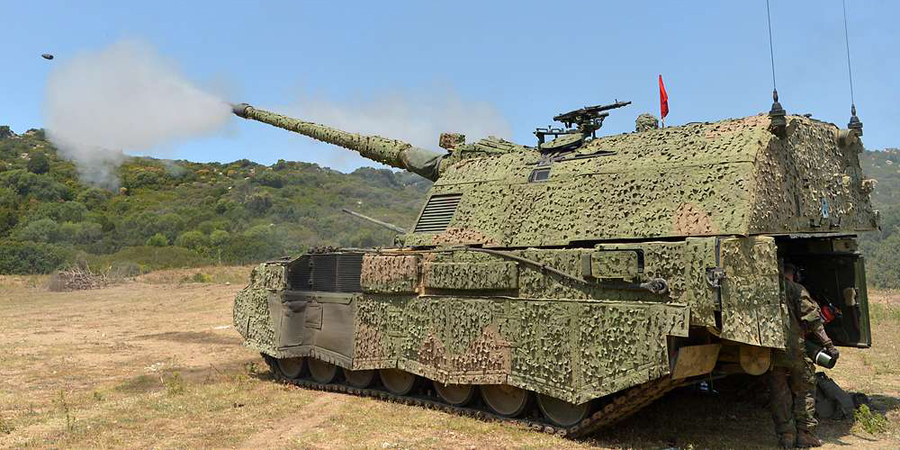
My camera position was on the edge of the range safety zone directly in front of an OP (observation post) around 300 metres from, and about 60m (200ft) above, the left flank of the zigzag trenches occupied by the Dutch infantry and 800 metres from the closest breaching point for the tanks, so most accompanying photos were taken with 300mm zoom lenses. Naturally when tanks, artillery and infantry weapons are firing live (note the red flags on vehicles in some shots) under peacetime safety rules as a civilian I could not be in the danger area, but even so the small media contingent present on the big day was allowed closer to the action than the generals to ensure we could do our job. Our NATO hosts also kindly allowed me to visit NOJU23 during the run-through rehearsal, which took place two days ahead of the JAPDD, hence the different lighting in some of the photos. My colleague Carl Schulze was also on the exercise, but as he was serving in uniform as a Reservist he was able to get closer to some of the action and fortunately the Bundeswehr has released a couple of his close-in live-fire photos for media use
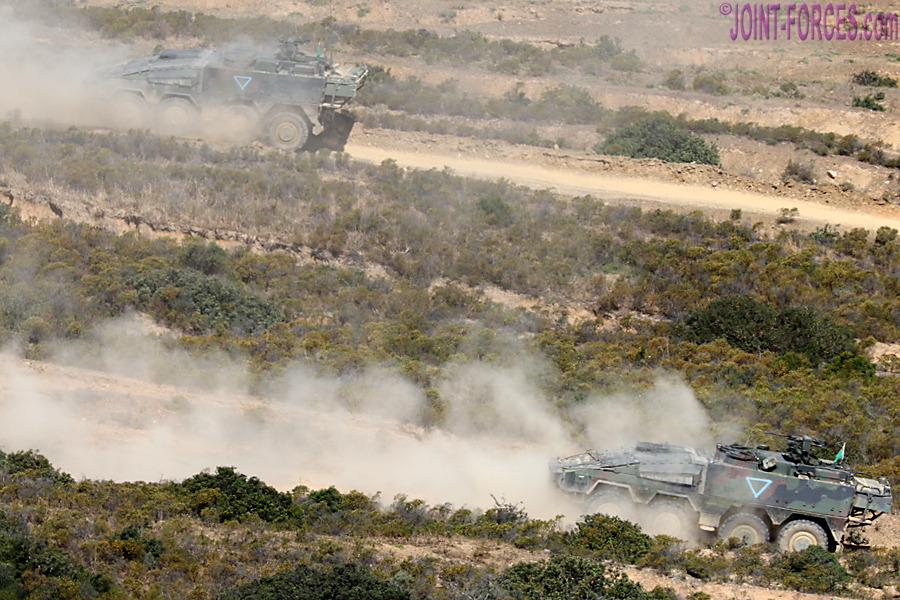
Back to the multinational VJTF 2023 action, led by Germany’s 37 Panzer Grenadier Regiment. Once the Dutch infantry had fallen back to their reserve positions, Norwegian armoured infantry from the Telemark Battalion travelling in CV-9030 Infantry Fighting Vehicles conducted a passage of lines and advanced on the trenches to clear them of the lead enemy forces elements. Above them one of two German Eurocopter Tiger helicopters taking part in the live-fire display supported repossession of the positions by engaging infantry targets and vehicle targets at slightly longer range after Norwegian mortars to the rear had engaged more distant targets. The VJTF is composed of both wheeled and tracked formations as the former can travel faster over greater distances to provide an initial defence while the latter, though slower to deploy and unable to travel so far without more logistic support, is better armoured for the counter-attack and also able to advance over rougher terrain.
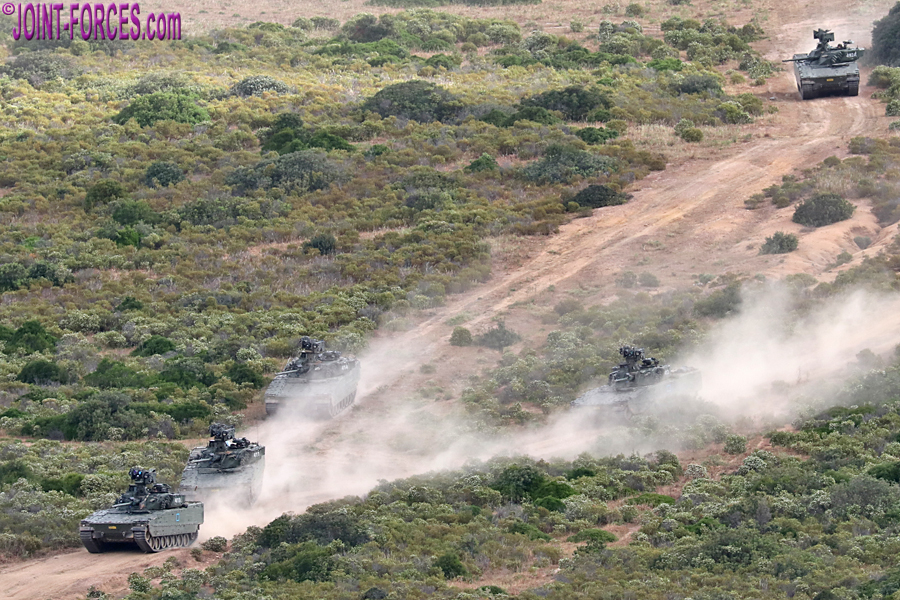
While the armoured infantry infantry were mopping up the trenches a Norwegian Wisent 2 Armoured Recovery / Engineer Vehicle or ARV/AEV, supported by CV90 IFVs, breached an anti-tank bund and filled in a ditch behind, plus combat engineers blew clear lanes through minefields further from our vantage point, to allow German Leopard 2 A7V and Norwegian Leopard 2A4NO main battle tanks to advance while engaging approaching enemy reinforcements in armoured vehicles. Across a roughly 500-metre wide front the joint battalion composed of elements of German and Norwegian Leopard companies, carefully choreographed to prevent blue-on-blue accidents, blasted its way forwards to push the enemy back to the beachhead and into the sea.
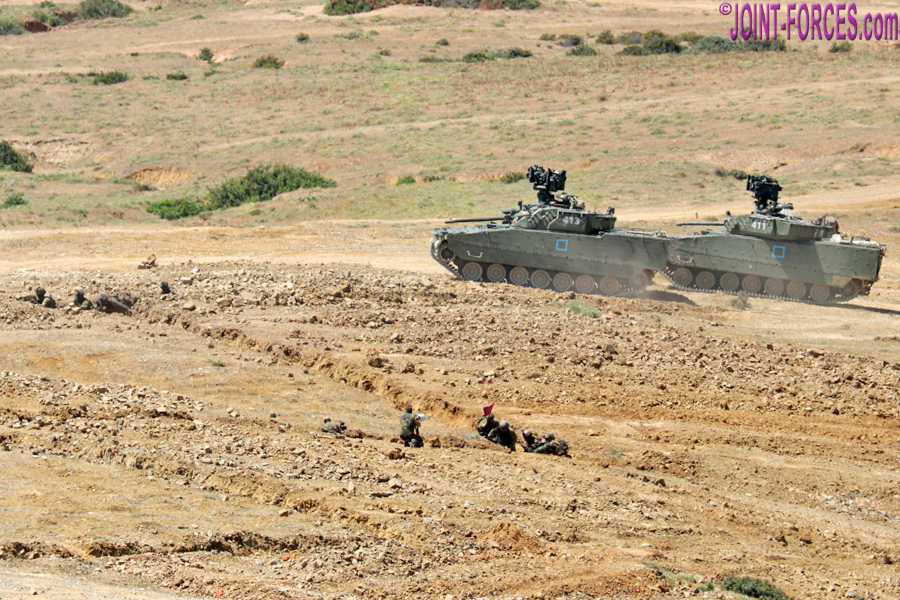
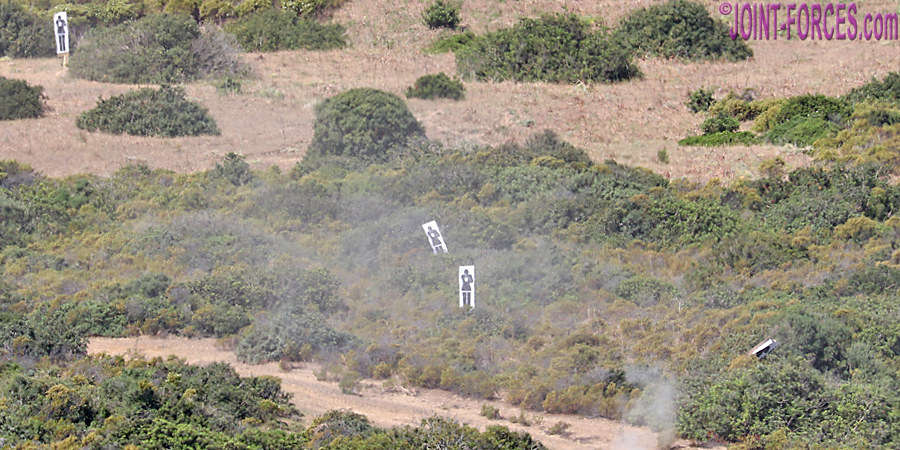
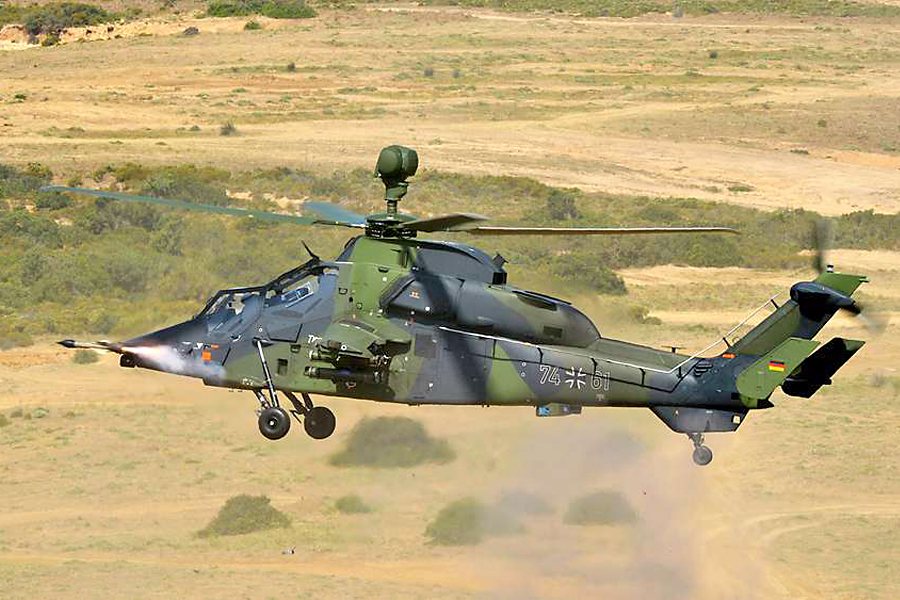
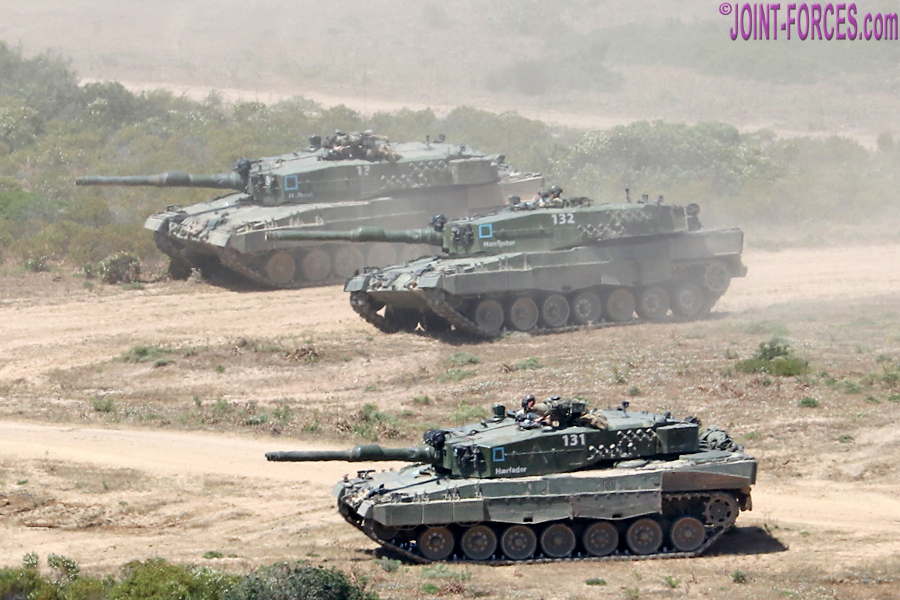
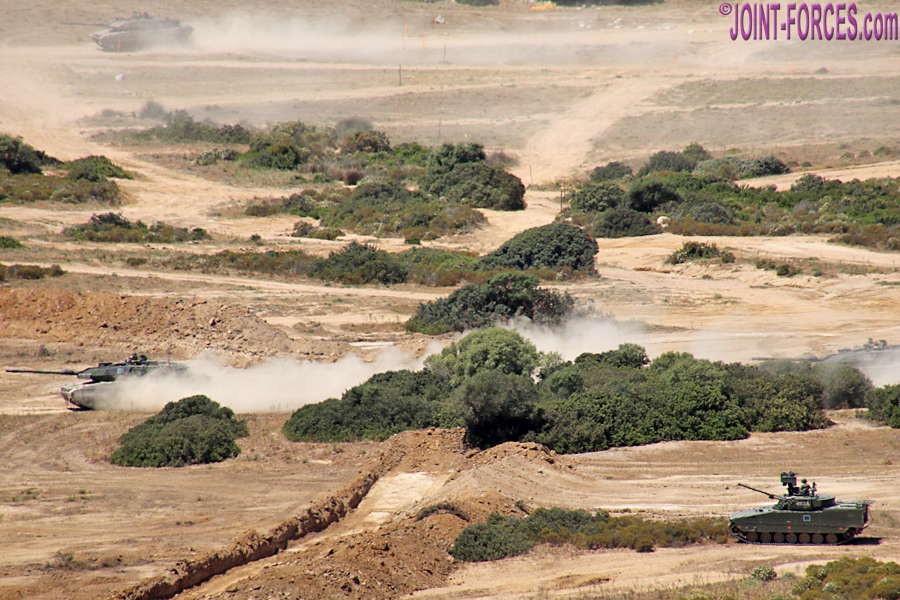
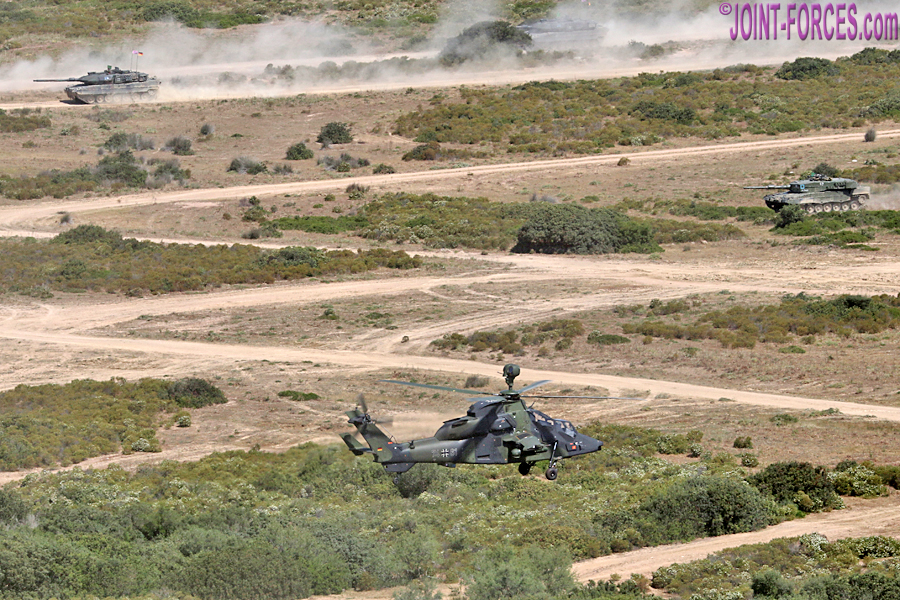
According to the camera time on my first and last images, from the first Special Forces operator exiting from an A400M (see Part One) to the last main battle tank reaching the stop line took just 75 minutes. As DEPLOYEX displays go, NOJU23 was by far the most impressive of several we have witnessed since NATO reorganised the VJTF following the 2014 illegal annexation of Crimea by Russia and the subsequent Wales Summit. Next year the UK is scheduled to lead VJTF 2024 and we await invitations to cover their pre-deployment work-up exercises and next year’s JAPDD (though we are not holding our breath as the UK Ministry of Defence, despite currently having almost as many civilian staff on the payroll as the downsized British Army, does not currently seem to be particularly keen at publicising the sterling work UK forces are engaged upon on their and our behalf).
Our next NOJU23 article, if all goes to plan, will take an exclusive look at the German and Dutch air defence live-fire exercise on the east coast of Sardinia.
[images © Bob Morrison unless otherwise noted]
~
- NOBLE JUMP 2023 JAPDD ~ The Big Picture Part One
- NOBLE JUMP 2023 JAPDD ~ The Big Picture Part Two


